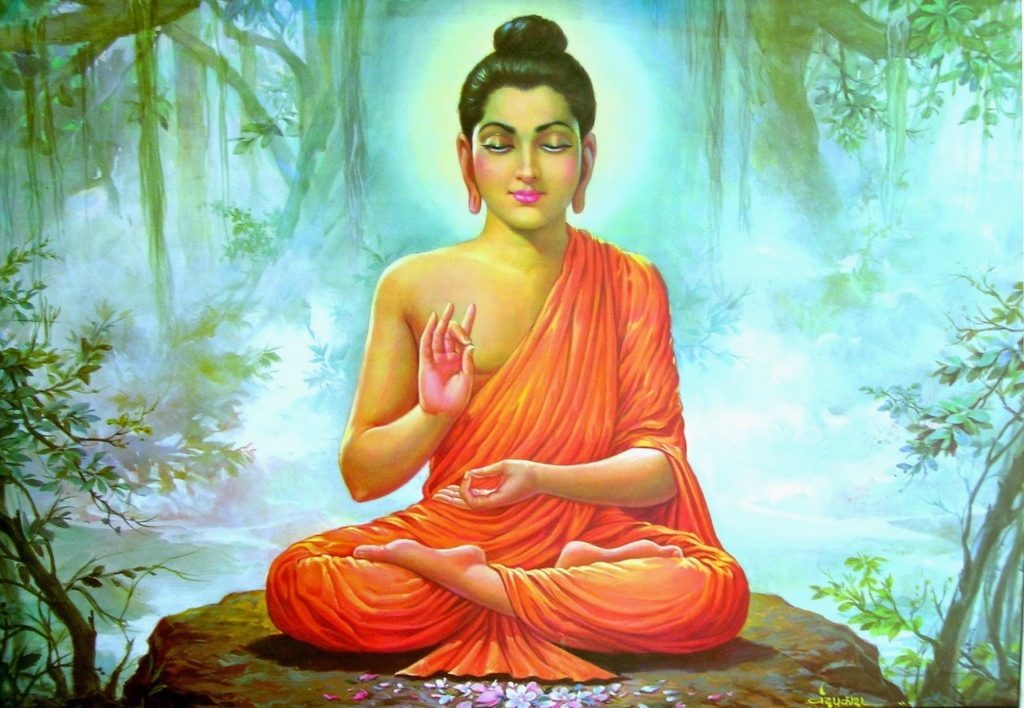
Causes for the Rise of Jainism and Buddhism
-complexities and ritualism
-expensive religious practices
-dominance of Brahmins
-rigid caste system
-resentment of Kshatriyas and Vaishyas
-efforts of holy men and intellectuals
Jainism
-24 Tirthankaras
-1st tirthankara- Rishabhadeva/Adinatha
-23rd Tirthankara- Parshwanath
-24th – Mahavira
–Vishnu Purana and Bhagavat Purana mention Rishabha as incarnation of Narayana
-Two Tirthankaras find mention in Rig Veda-Rishabha and Arishtanemi
4 Main Teachings of Parshwanath-(Pancha Mahavratas-5 Vows of Jainism)
1.Ahimsa
2.Satya
3.Asteya (non-stealing)
4.Aparigraha(non-possession)
5th one- Brahmacharya was added by Mahavira
Vardhamana Mahavira
– born 599 BC at Kundagrama near Vaishali Jnathrika Kshtriya under Vajji of Vaishali-ascetic at the age of 30-enlightenment 12 years later-becomes Jina i.e. conqueror of self – followers called Jains-died 468 BC at Pavapuri near Rajgriha.
-in early life-accompanied by Makkhali Gosala-who later founded Ajivika sect
–Kaivalya (supreme knowledge)- at the age of 42– under a Sal tree at Jambhikagrama on the bank of river Rijupalika
– 1st sermon- Pava- 11 disciples-Gandharas
Teachings-
-no belief in God
-no faith in yajnas,sacrifices,rituals ,vedas and caste system
-faith in ahimsa
-believed in karma and transmigration of soul
-laid emphasis on equality
-belief in hard penance
3 Jewels/Triratna-
1.Right Faith (samyak shradha),
2. Right Knowledge (samyak jnan)
3.Right Action (samyak karma)
Types of Knowledge-5 Types-
1.Mati jnana-perception through sense organs including mind
2.Shruta jnana– knowledge through scriptures
3.Avadhi jnana– clairvoyant perception
4.Manahparyaya jnana– telepathic knowledge
5.Keval jnana– temporal knowledge or omniscience
Three Guptis
1.Managupti: Control of the mind
2.Vacanagupti: Control of speech
3.Kayagupti: Control of body
Five Samitis
1.Irya Samiti: Carefulness while walking
2.Bhasha Samiti: Carefulness while communicating
3.Eshana Samiti: Carefulness while eating
4.Adana Nikshepana Samiti: Carefulness while handling their fly-whisks, water gourds, etc.
5.Pratishthapana Samiti: Carefulness while disposing of bodily waste matter
Syadvada ie Theory of May be /Perhaps–
all judgements are conditional.relative,limited- also called Anekantavada– theory of Plurality.
Spread-
-Kosala,Magadha,Mithila,and Champa during the lifetime of Mahavira
-patronised by Bimbisara and Chandragupta Maurya
–Rashtrakutas and Chalukyas patronized Jainism in South India-Rajpur Rulers
-Division in 2 sects- Digambaras and Svetambaras
Impact-
-Regard for all forms of life
-broke barriers of caste system
-reformatory influence on religion
-weakened martial spirit
Jain Literature-
-Svetambaras- Prakrit language- Ardhamagadhi Prakrit
– Classification- Angas, Upangas,Parikarnas,Chhedasutras,Mulasutras,Sutra-granthas
Purvas/Parvas-part of Angas and oldest text of Mahavira’s preachings.
Important Jain texts
Kalpasutra-in Sanskrit by Bhadrabahu
Bhadrabahu Charita
Parishishta Parvan by Hemchandra
Jain Architecture-
1.Caves –Hathigumpha,Baghagumpha etc,Udaigiri and Khandagiri(Odisa)- Kharvela
2.Dilwara Temples-Vimalavasahi Temple,Tejapala Temple-Mount Abu,Rajasthan
3.Templs- Girnar and Palitana(Gujarat)
4.Pavapuri temple,Rajagriha temple,Bihar
5. Statue of Gometeshwar/Bahubali– Shravanbelagola,Karnataka
Jain Councils
1-300BC- Patliputra–Sthulabhadra(Chairman)-Chandragupta Maurya(patron)- compilation of 12 Angas
2.512 AD-Vallabhi–Devardhi Kshmasramana (chairman)- Final compilation of 12 Angas and 12 Upangas.
